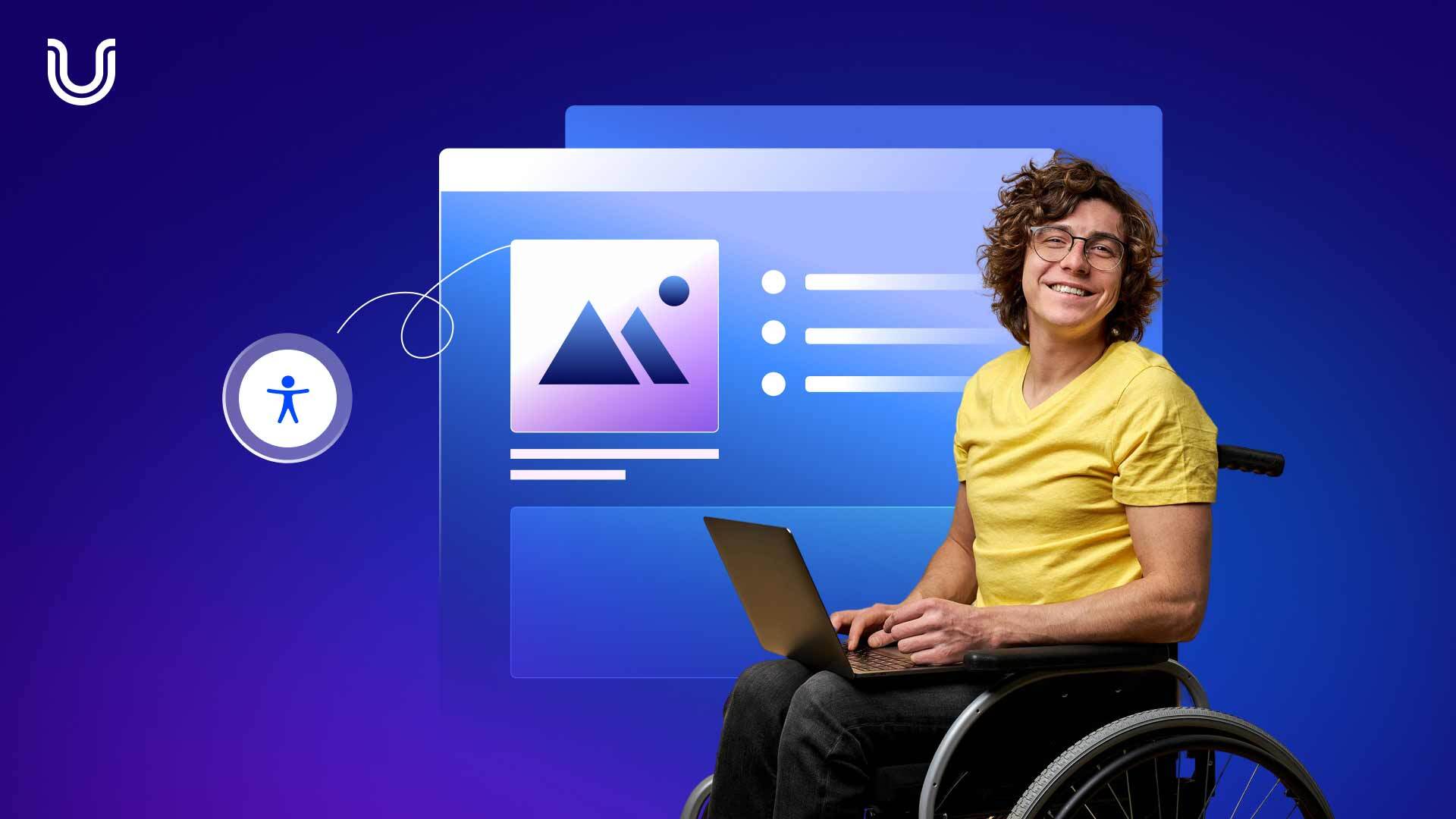Inclusive Marketing: Breaking Down Barriers for People with Disabilities

One of the most positive trends in modern society is increased awareness of diversity and inclusion. As a result, people now expect their chosen brands to embrace inclusive marketing, including accommodating people with disabilities. And it should be an easy strategy for any business to embrace. Inclusivity aligns with ethical values and opens new opportunities to tap into a diverse market. This blog discusses making your brand more inclusive by eliminating the barriers people with disabilities face in the digital realm and beyond.
We start by looking at the challenges disabled people endure in the workplace.
Being an Inclusive Company Requires Awareness
Building an inclusive brand requires commitment, empathy, and a genuine desire to impact the world positively. By breaking down barriers, brands can tap into a vast and underserved market, create positive brand perception, and contribute to a more inclusive and equitable society. But first, you have to understand the challenges faced by people with disabilities.
These challenges create barriers that hinder their access to physical, sensory, or cognitive products, services, and information. In the digital age, addressing these obstacles goes beyond physical spaces to encompass websites, apps, and online platforms. Understanding these roadblocks to progress helps your brand make strides toward creating a more inclusive approach to marketing and your workplace.
Read on to learn proven ways to enhance workplace inclusivity.
How Can Brands Be More Digitally and Physically Inclusive?
-
Digital Inclusion for an Accessible Web
A crucial step in achieving digital inclusion is designing accessible websites and apps. A more inclusive web experience involves adhering to web content accessibility guidelines (WCAG) to make digital content.
Perceivable, operable, and understandable for individuals with various disabilities.
-
Using Assistive Technology For Accessibility
Implementing features like alt text for images, keyboard navigation options, and video captioning can significantly enhance the user experience for people with visual or motor impairments. Additionally, ensuring that your website is compatible with screen readers and other assistive technologies is critical to reaching a wider audience.
-
Inclusive Marketing and Communication
How a brand communicates with its audience is pivotal in shaping its image. Inclusive branding should include advertising materials, and communication strategies should cater to your audience’s diverse needs. One inclusive marketing example is using accessible content formats like providing transcripts for audio content and using plain language in written materials. Imagery and messaging should also reflect diversity, showcasing individuals with disabilities in a positive and empowering light.
-
Breaking Down Physical Barriers
Beyond the digital realm, organizations must create physical spaces with inclusivity in mind. These physical spaces should have ramps, wider doorways, and accessible restroom facilities to accommodate people with mobility challenges. Moreover, incorporating tactile signage and providing assistance services can significantly improve the experience for individuals with visual impairments.
Additional Examples of Inclusive Marketing
-
Put Your Target Audience First
You must understand your audience to succeed with any marketing initiative. To focus on greater inclusivity for people of all abilities, do a deep demographic dive of disabled people. You’ll discover they have particular needs that shape your web/print design and messaging strategies and help you choose the right technology to support digital accessibility.
-
Welcome Feedback
Testing your products and digital assets with focus groups or internal resources gives you invaluable input. Always include people with disabilities as part of our test groups because they have a perspective only they can provide. How does your marketing plan compare to other companies promoting inclusivity? Does it consider the needs of your target audience? How can you leverage your push for inclusivity to enhance your brand image?
-
Create Your Plan Outline
Now that you’ve tested your marketing assets and determined where to improve your inclusivity efforts, it’s time to make a plan. You determine timelines with details on design/content, meetings, photoshoots, video shoots, etc. Now, you’re ready to distribute your plan companywide for much-needed support.
-
Get Top-Down Support
Rally the highest reaches of your executive team to get behind greater physical and digital inclusivity. Getting support from decision-makers and financial stakeholders is critical to maximizing the reach and success of your marketing initiatives and goals. Now, you’re ready to execute and deploy.
Promoting and Teaching Inclusive Marketing In-House
Embracing people of all backgrounds reflects positively on your brand’s commitment to inclusivity. You need the right workplace environment to accommodate people with disabilities, provide reasonable accommodations, and ensure that hiring processes are unbiased and accessible. Including individuals with disabilities in the workforce enriches the organization with diverse perspectives and sets a standard for other businesses.
From a business-to-consumer perspective, inclusivity requires a cultural shift in your organization, and one of the most direct touchpoints is customer service. Start by teaching employees about different types of disabilities, appropriate language, and best practices for assisting customers with diverse needs. Encouraging a culture of empathy and understanding positions your staff for exceptional service to everyone, regardless of their abilities.
Collaborating with Accessibility Advocates and Organizations
Collaborating with accessibility advocates and organizations is a terrific way to deepen your commitment to inclusivity. Engaging with these groups can provide valuable insights into the challenges faced by people with disabilities and offer guidance on addressing them effectively. Partnerships with disability advocacy organizations contribute to positive social impact and position the brand as an inclusivity leader.
Actively seeking feedback and incorporating suggestions from these partnerships shows your brand’s dedication to continuous improvement. This commitment also connects you with a broader audience and contributes to breaking down societal stereotypes associated with disabilities.
Inclusive Marketing Requires a Comprehensive Effort
Making your brand more inclusive requires addressing both digital and physical barriers faced by individuals with disabilities. Digitally speaking, accessible websites and apps are now essential to an equitable user experience. Likewise, breaking down physical barriers is critical for employees and visiting customers with unique considerations. You also need solid staff training for inclusive customer service, accessible marketing and communication strategies, and inclusive employment practices.
Lastly, never work in a vacuum. Collaborating with accessibility advocates simplifies and expedites your efforts to embrace inclusive marketing and customer service so you become a company that genuinely welcomes and celebrates diversity.
Inclusive Is What UserWay is All About
You can’t have an inclusive company or workplace without digital accessibility. UserWay covers all of your needs. From attorney-staffed legal support to AI-powered accessibility tools and enterprise business solutions, UserWay is the best way to achieve better accessibility and compliance.
Let UserWay be your guide.
Answers to Common FAQs
Why Should Brands Be More Inclusive?
Inclusive branding broadens your audience to include millions of people with disabilities. It enhances your brand image and increases brand loyalty as customers increasingly expect companies to embrace more inclusive practices.
How Do You Achieve Inclusive Marketing?
Advertising can be more inclusive by incorporating more voices, creativity, and perspectives, representing a wider audience. For example, inclusivity could mean including diverse imagery and language in ad campaigns.
How Does Inclusion Help Organizations Succeed?
Inclusion can be a competitive advantage because employees are more likely to express their ideas and opinions when they feel like part of a team. This inclusion naturally boosts morale, which increases productivity. Your business also benefits from your teams’ diverse skills and experiences.




Share